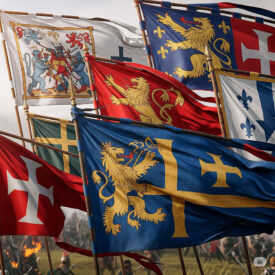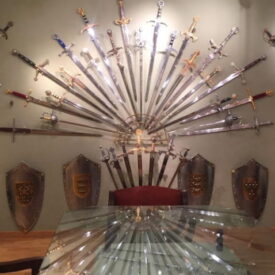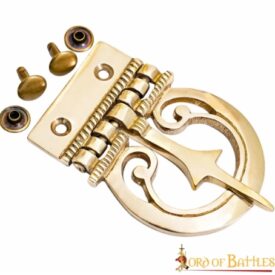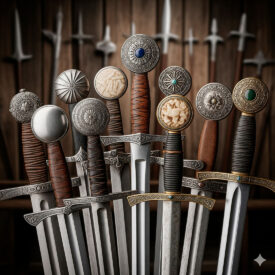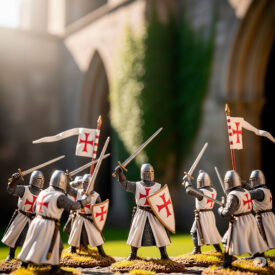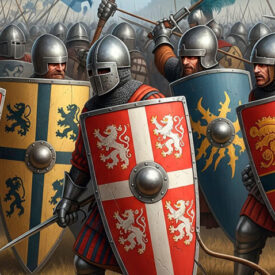Marto’s “Historical Imprints” collection includes decorative pieces that reproduce coats of arms and emblematic symbols of medieval history, manufactured in Toledo by the renowned Marto brand, famous for its quality in historical replicas.
These imprints usually measure approximately 20 x 15 cm and represent elements such as the Seal of the Knights Templar, with original Latin inscriptions and details faithful to the historical design. They are accompanied by special wooden frames of 32 x 37 cm that allow each piece of the collection to be framed and highlighted, being ideal for collectors and lovers of thematic decoration.
Man’s artistic manifestations are more than 40,000 years old and begin with paintings in the caves where he lived; thanks to that, today we can contemplate the social relations, the different ways of life, the wars, even the simplest moments of the daily life of our ancestors.
Imprints That Leave a Mark: A Walk Through Medieval History
In that vast universe of historical representations, the Middle Ages stands as a period especially rich in symbology. Seals and shields were not mere ornaments, but powerful declarations of identity, authority, and faith. Marto’s “Historical Imprints” collection, handcrafted in historical Toledo, precisely rescues these timeless emblems, offering a unique window into the complexity of the military and religious orders that shaped Europe.
But we are going to focus on the medieval era, from the 5th to the 15th century, on historical imprints, in which we discover symbols, seals, orders, etc. Historical imprints are wonderful decorative objects, they inspire and teach small parts of history through simple images, but full of meaning, such as the Templar Cross, one of the most distinguished symbols of the Middle Ages.
The Order was recognized by the Church in 1118 and its original purpose was to protect the lives of Christians who peregrinated to Jerusalem after its conquest. Little by little it grew in size and power, reaching Aragon in 1130. Once here, some counts requested their entry into the Order and others ceded their lands and castles to it. The Knights Templar regularly sent money to the Holy Land, and over time they became the bankers of Europe, of course, in a primitive way, but they managed to accumulate a great fortune. In 1307, King Philip IV wanted to appropriate that fortune and used his power and influence to exterminate the Order. Finally, the Pope, to whom the Templar Order responded, decided that due to its permissive character with other religions, the Knights should be judged for heresy and their belongings handed over to the Hospitalers, another significant Order of the time.
In the imprint that guards the Templar Cross many more secrets are hidden, such as a Templar Order inventor of logistics, promoter of education, defender of a concept, not of personal interests; its most important belief was that human beings were children of God and all had the right to seek their spirituality in equal conditions, without taking into account race or economic level. In 2007, the Vatican publishes “Processus contra Templarios”, a document that confirms the Church’s position in favor of the dissolution of the Templars. Another important moment in history was marked by the Order of Santiago.
According to the writers of the time, the cross that symbolizes the Order was not exactly the same as we know it today, but was accompanied by some other sign of the apostle and, at first, the Order was called The Knights of Cáceres. It was a religious and military order that arose in the 12th century in the Kingdom of León and owes its name to the national patron saint of Spain, Saint James the Great. The Order was born after the conquest of Cáceres, in 1170, with the aim of protecting the pilgrims of the Way of Saint James and pushing back the Muslims from the Iberian Peninsula.
Its history is full of warlike episodes, both outside, defending Christianity, and within its bosom, since it was a means of achieving noble titles. One of the peculiarities of this order was that they did not have to make a vow of chastity, that is, they were allowed to marry, but with pontifical approval because, they said, “it was better to marry than to burn.” After expelling the Muslims, the Government of the First Republic extinguished the order in 1873.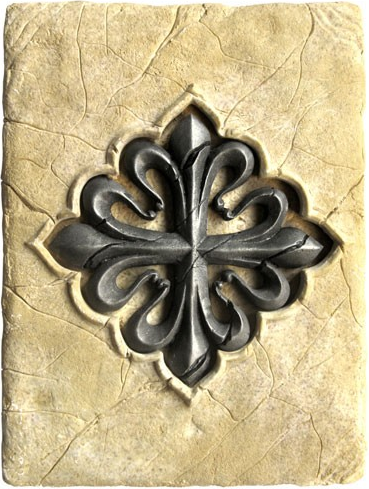
Historical imprint of the Order of Calatrava. The Order of Calatrava is a military and religious order, founded in the Kingdom of Castile in the 12th century by the abbot Raimundo de Fitero, with the initial objective of protecting the town of Calatrava, located near the current Ciudad Real. It belongs to the group of Cistercian Orders and currently only has an honorary and noble character. This Order became very powerful, so much so that the kings decided that the Masters would be appointed by royalty. The masters represented absolute power in military, religious and in the last years of the Orders, political matters, in such a way that what the monarchy really wanted was to absorb all the Orders and incorporate the knights into the military service of the Crown.
The historical imprints of the Orders are part of a unique collection, along with the imprint of the Templar seal, the cardinal’s seal, or the Gate. The perfect companion is the wooden frame, manufactured in Toledo, ideal for the set of historical imprints.
Each of these pieces is not just a replica, but a tangible fragment of eras of great changes, battles of faith, and the consolidation of power. Collecting these imprints is a way of keeping alive the memory of the knights, leaders, and movements that defined the identity of the Middle Ages. With the care and artisanal mastery of Marto, these imprints become decorative elements of great historical and aesthetic value, perfect for any space seeking a touch of nobility and legend.



